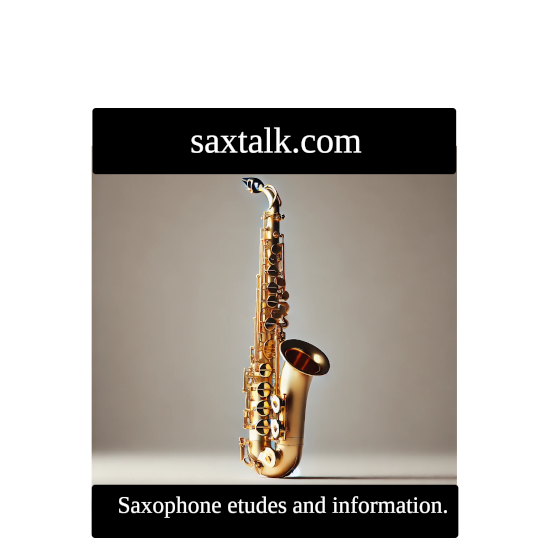Using MuseScore as a Sight-Reading Improvement Tool
Introduction
Artificial neural networks (ANNs) learn by studying labeled training data. For example, to train an ANN to recognize cats, one would train it on pictures containing cats and dogs where all of the cats and dogs were labeled as such. After hours and hours of training, the ANN would then be able to recognize cats and dogs in pictures that it had never seen before.
Humans learn in the same way that artificial neural networks do: by looking at examples. For example, a young person would learn how to change the oil in their car by first watching their mother or father doing it, then by trying to do it themselves while getting feedback from their mom or dad.
MuseScore is a computer program that plays sheet music. Computers excel at precision, so MuseScore almost always plays notes, rhythms, and harmonies with perfect accuracy. So I use MuseScore as a tool to improve my sight-reading by playing my saxophone along with MuseScore as it plays the score that I’m learning. In this article, I’ll give a high-level overview of my process.
Gathering Training Material
The most important part of any training process is getting good source material. The way to become a good sight-reader is to compile a good and diverse corpus of musical works. For example, if you only practice sight-reading classical music, you’ll only be highly proficient in sight-reading classical music. If you sight-read jazz music, classical music, Latin music, music from a variety of African countries, music from a variety of Asian countries, et cetera, you’ll be a much more well-rounded and competent musician.
Where can you get high-quality music scores? I have a professional membership with MuseScore.com, which allows me to download an unlimited number of user-generated music scores. I randomly download music scores that I like from MuseScore, and I slowly transpose them into all 12 keys on my personal computer.
I keep a LibreOffice Base database of all of my scores, and I print my scores and put them in binders. I then use MuseScore to export the music scores as Ogg Vorbis audio files, which I load onto my MP3/Ogg Vorbis player. At the top of each printed score, I put the folder location of the score on my audio player so I can easily find them during practice sessions.
My Playalong Practice Sessions
Once I’ve loaded the audio of the scores onto my Ogg Vorbis player, I’m ready to practice. I open my binder to the page of the score, put on headphones, and hit “play” on my Ogg Vorbis player. I then play along with the flawless example of how the score should be played, as presented by MuseScore. Typically, I export each audio file at three tempos: 50%, 75%, and 100%. Of course, I always start at the slowest tempo. It’s better to perfect playing the notes and rhythms at a slow tempo before increasing the tempo. Perfection always occurs at the slower speed first. Once you’ve perfected playing the piece at the slower speed, then you can learn it at other speeds.
Getting More Sources of Music Training Material
I am a music score collection nerd: I’ll collect scores from any source. I play in a band, and we play a lot of music. So as time allows, I’ll transpose the PDF scores that I get into MuseScore so I can hear exactly how they should be played. Once I have the audio as a digital MuseScore file, I just play it over and over again until I can play it masterfully. Mastering any task can be deconstructed to one simple task: continuous repetition.
Writing Your Own Saxophone Etudes
One of the best ways to improve your mastery of melody, harmony, and rhythm is to write and practice your own saxophone etudes. By writing and playing your own saxophone etudes, you learn how your mind works. Mastering the way that your mind works, and learning every technical detail of the saxophone that you've chosen to play are two steps that will give you an undeniably unique and personal way of playing your saxophone.
Conclusions
I hope I laid out my process as simply and clearly as possible. Sight-reading alone is not enough to develop a masterful musician: one also has to learn how to improvise. So in addition to practicing sight-reading along with MuseScore, I also practice playing along with a very diverse range of music by ear: jazz, classical, pop music, Christian music, etc. The most important concept: learning never ends; it is a lifelong process.
Thank you for reading this article!
